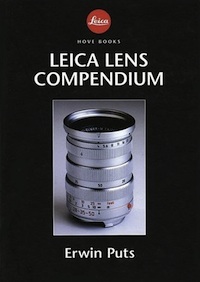peterm1
Veteran
I have a copy of Erwin Puts book The Leica Compendium which I bought some years ago as reference material. Puts' book is a classic of its type and concentrates on Leica's lenses over the years with lots of technical assessments of each. But I had never bothered to read the early chapters until recently. In those chapters he talks somewhat about the history, the optical design challenges faced by Leitz and some of the struggles they had had in meeting them in those days before computers made the job easier.
The thing that struck me was that this relatively small firm, E. Leitz and Co (which was the firm's name before they changed it to Leica - naming their firm after their camera) really had some difficult challenges to meet. Their range of lenses usually had to be quite small because of the huge technical and other challenges of designing new optical designs , those challenges also included the immense cost and time expenditure, getting the new glass types needed for them to work was also an issue, then meeting the engineering challenges of building them at the quality / cost trade offs that would work in their segment of the market only added to the difficulties of bringing new lenses to market. I had not quite realized that new lens designs sometimes just could not be built when the designs were sent to the engineering department because the technology to make them was still not there. Even then the challenges were not over as Leica's time honored production methods used highly skilled technicians to assemble parts into lenses and cameras.
Of course for the first 20 -30 years of their camera and lens making existence there were very few other companies that could compete with them and to meet the challenges of having a full range of lenses available to their customers they had to partner with other companies to fill out their lens range due to the high cost of developing new lenses (The Schneider Super Angulon wide angle lens is a case in point). For much the same reason many lens designs were not wholly new, but rather based on earlier designs as it is easier to evolve than to start from scratch when one lens could consume many thousands of hours to compute).
For anyone interested in optics and the history of Leica this is a fascinating read because it will help give an understanding of just how difficult it is to design high quality lenses (of course it's somewhat easier today because of the accumulated knowledge and the advent of computers and new materials).
The PDF version of his old version of this book which no doubt covers the same historical background is available free online at this link (and others)
https://www.apotelyt.com/doc-pdf/leica-puts-lens-compendium-2005.pdf
Also this PDF may interest people. Its focus is on lens technical stuff and seems to come from the same book.
http://www.overgaard.dk/pdf/Leica-M-Lenses-Their-Soul-and-Secrets_en.pdf

The thing that struck me was that this relatively small firm, E. Leitz and Co (which was the firm's name before they changed it to Leica - naming their firm after their camera) really had some difficult challenges to meet. Their range of lenses usually had to be quite small because of the huge technical and other challenges of designing new optical designs , those challenges also included the immense cost and time expenditure, getting the new glass types needed for them to work was also an issue, then meeting the engineering challenges of building them at the quality / cost trade offs that would work in their segment of the market only added to the difficulties of bringing new lenses to market. I had not quite realized that new lens designs sometimes just could not be built when the designs were sent to the engineering department because the technology to make them was still not there. Even then the challenges were not over as Leica's time honored production methods used highly skilled technicians to assemble parts into lenses and cameras.
Of course for the first 20 -30 years of their camera and lens making existence there were very few other companies that could compete with them and to meet the challenges of having a full range of lenses available to their customers they had to partner with other companies to fill out their lens range due to the high cost of developing new lenses (The Schneider Super Angulon wide angle lens is a case in point). For much the same reason many lens designs were not wholly new, but rather based on earlier designs as it is easier to evolve than to start from scratch when one lens could consume many thousands of hours to compute).
For anyone interested in optics and the history of Leica this is a fascinating read because it will help give an understanding of just how difficult it is to design high quality lenses (of course it's somewhat easier today because of the accumulated knowledge and the advent of computers and new materials).
The PDF version of his old version of this book which no doubt covers the same historical background is available free online at this link (and others)
https://www.apotelyt.com/doc-pdf/leica-puts-lens-compendium-2005.pdf
Also this PDF may interest people. Its focus is on lens technical stuff and seems to come from the same book.
http://www.overgaard.dk/pdf/Leica-M-Lenses-Their-Soul-and-Secrets_en.pdf


